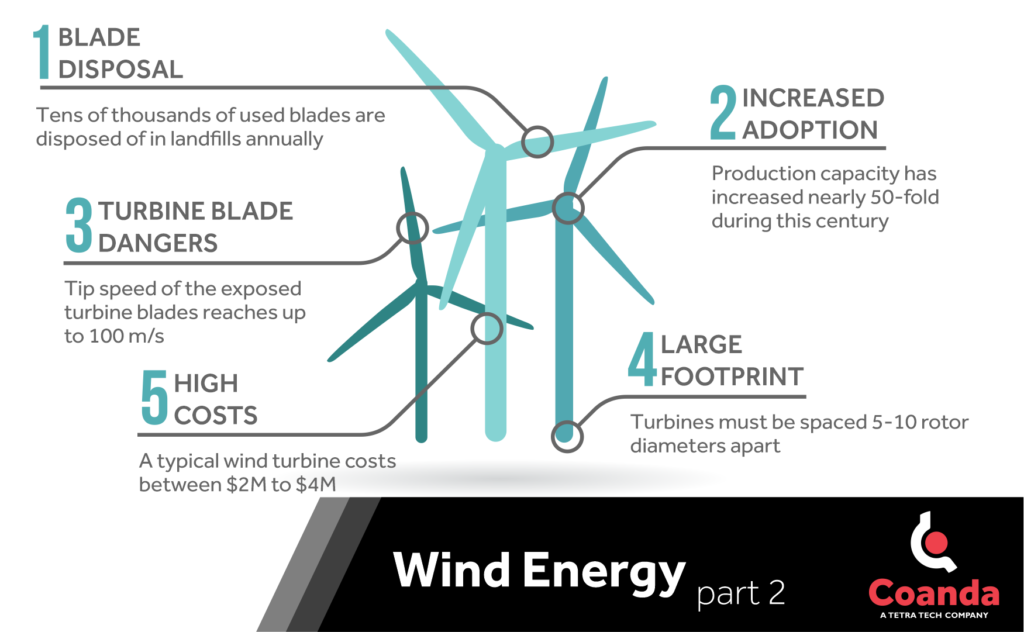Wind Energy
Posted on November 8, 2022 Cleantech Industries
This post was originally published in two parts which have been combined below.
Part 1
Humans have harnessed the power of wind since ancient times, using its energy to do mechanical work, such as propelling sailing vessels, milling corn, and powering other machinery. Despite this long history however, wind power saw its relevance wane during the industrial age. Now, as we search for renewable and sustainable alternatives to fossil fuels, wind power is returning to the forefront.
The principle of wind power is simple: moving air drives a wind turbine connected to a generator that converts the kinetic energy of the wind into electricity. Wind speed and direction varies greatly depending on location, and is affected by bodies of water, vegetation, and terrain. Wind conditions also vary diurnally, seasonally, and due to weather systems.
The best sites for windmills are therefore those where strong, sustained winds can be expected, conditions that are most often found at sea. Even under ideal circumstances however, the rate of production is dependent on the elements and cannot be varied to meet changes in demand without other means of energy storage.
In our next post we’ll explore some of the challenges and implications of wind technology, stay tuned.
Part 2

Like other sustainable technologies, wind power is not without environmental consequences. Besides the aesthetic disruption of the natural environment, the surprisingly high tip speed of the exposed turbine blades—up to 100 m/s—is both a source of considerable noise and a significant hazard to birds. Additionally, the land use impact of wind power is not trivial. Because turbines must be spaced 5-10 rotor diameters apart, a typical installation requires upwards of 30 acres (12 ha) per MW of power produced. This impact can be reduced by using the space between turbines for other purposes, such as grazing or growing crops.
Initial installation, setup and maintenance costs can also be prohibitive. A typical wind turbine capable of producing 2-3 MW of power costs between 2 to 4 million dollars. Annual operational and maintenance costs amount to around $50K. Additionally, the fibreglass turbine blades require periodic replacement, with tens of thousands of used blades disposed of in landfills annually, a figure that will grow considerably as installed usage continues to grow.
Despite these challenges, the increased efficiency of modern turbine designs and dramatic reductions in capital and operating costs have helped wind energy to become the fastest-growing clean-energy technology in the world. Installed production capacity has increased nearly 50-fold during this century (from 17 GW to 830 GW), and this is projected to increase by an additional 550 GW by 2027, representing nearly 10% of 2021 global electricity production. While relatively poor land-use and supply intermittency limit its potential as a primary source of energy, its increasing cost-efficiency ensures wind power will continue to play an important supporting role in the future of energy.


